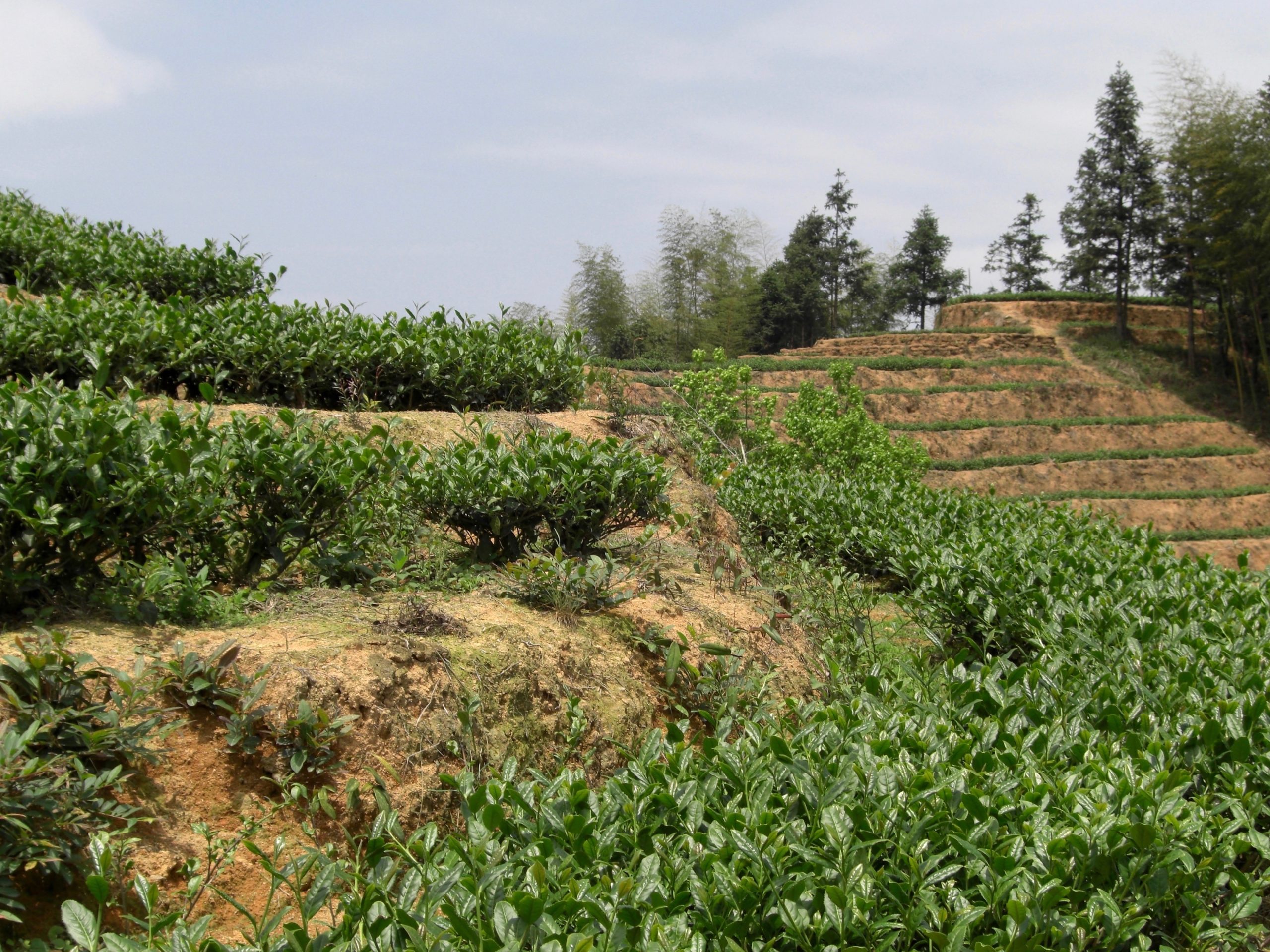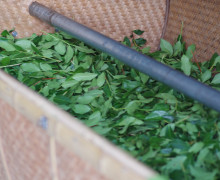Jin Guanyin (Golden Tieguanyin)
Anxi Wulong Tea 2025
Harvested only on a sunny day for the richest aroma and greatest complexity, Jin Guanyin yields buttery and intense fruity-floral aromatics and a bright yellow-green infusion. Made in the modern lightly roasted Anxi pearl style with a very clean and smooth brew and a very light yet full flavor.
- Tea Origin
- Anxi County, Fujian Province, China
- Tea Bush
- Hongxin Tieguanyin (Red Heart Tieguanyin)
- Tea Maker
- Zhang Shuiquan and Zhang Qingjian
- Harvest Time
- Early May
- Plucking Standard
- Zhong kai mian
Harvested only on a sunny day for the richest aroma and greatest complexity, Jin Guanyin yields buttery and intense fruity-floral aromatics and a bright yellow-green infusion. Made in the modern lightly roasted Anxi pearl style with a very clean and smooth brew and a very light yet full flavor.
Golden Tieguanyin is a green-style Anxi wulong tea with an uncommonly intense fragrance. The aromatic richness of its dry leaf stands out even among other Tieguanyin. When brewed it yields buttery and fruity aromatics and a bright yellow-green infusion. Its flavor is full bodied with both sweet and sour notes – the telltale character of true Tieguanyin leaves. Golden Tieguanyin is a tea to be enjoyed over multiple infusions, each infusion unveiling new layers of its flavor.
The sunshine tea harvest

Clear sunshine is considered ideal harvest conditions for leaves to be made into wulong tea. The warmth of the sun on the leaves excites molecular activity within them, increasing their flavor and aroma. When the tea on the bushes is ready for harvest, the leaves from the sunniest day of plucking are put aside specially for Jin Guan Yin to provide the highest possible aroma for this high grade tea.
What does Tieguanyin mean?

Anxi County’s famous tea bush cultivar has the unusual name Tieguanyin, sometimes translated as “Iron Goddess” or “Iron Goddess of Mercy.” This striking name comes from the legend that a man in Anxi was guided by Guanyin, the Bodhisattva of Mercy, to find this tea’s original mother bush, the ancestor of all Tieguanyin tea bushes. The “iron” part of the name comes from the tendency in Chinese culture to use iron to describe heavy things. While many modern Tieguanyin teas are more green in color, traditionally roasted wulong tea leaves have a dark, heavy color like cast iron.
High mountain cultivation and cultivar

The Zhang family who produce our Tieguanyin teas grow the original Tieguanyin cultivar of tea plant on their farm in Anxi County. They do not blend it with other local cultivars, as is the case with most Tieguanyin on the market today. The leaves used to craft this tea are grown in a higher (above 1000m) mountain region that is far removed from Anxi City, where most Tieguanyin is made. In this high mountain region, the environment is relatively untouched and free from pollutants, and as as a result, the regions tea naturally carries a light wild flower aroma.

This high-altitude cultivation also enables producers to grow the higher-quality Hongxin “Red Heart” cultivar of Tieguanyin, which is better adapted to the cooler climate. Unlike the more common Lüxin “Green Heart” cultivar grown at lower elevations, Hongxin Tieguanyin displays a distinctive faint red blush in its youngest leaves, surrounded by mature green leaves.
History of Anxi Wulong
For centuries, Anxi wulong was made in much the same way as rock wulong in other parts of Fujian Province or Dan Cong wulong in Guangdong Province. This traditional style of wulong is what gave this type of tea its name, called wu long or “black dragon” after the long, dark, twisted shape of the finished loose tea leaves.
However, in the 1990s, Anxi producers began replacing the long, low-temperature roast of the tea with a quick, hot roast to retain the leaves’ greener character. Other adjustments were made to the processing to produce a much lighter, less oxidized, and intensely floral tea that was much more similar to a green tea. Because green tea has always been and remains the most popular type of tea in China, green-style Anxi wulong was wulong producers’ attempt to capture some of the very large domestic Chinese market for green tea. This tactic was extremely successful, and modern green Anxi wulong has become incredibly popular. The compact pearl style was introduced to protect the leaf from breakage during transport. These days, green-style Anxi wulong pearls have become the face of Anxi wulong in China.

Some Anxi producers are now slowly moving back to making Tieguanyin in the traditional way, with the darker roast and the long, twisted leaves. Both methods of processing yield very different end results, but both benefit from the high quality and unique clean character of the Tieguanyin bush.
No chemical fertilizer, pesticide, or herbicide was used in the production of this tea. Click here to read more about our promise to fair trade and the environment.
















